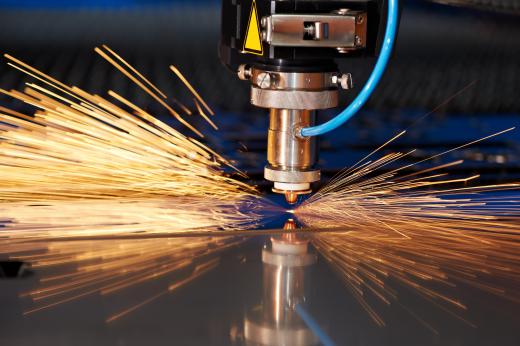Laser drilling is the process of drilling holes using lasers. This can be done on a small scale, such as the drilling of very small holes in machine parts, or on a larger scale, such as larger holes in materials that do not hold up well under normal drilling techniques. Lasers are devices that generate powerful beams of light by the concentration of highly energized photons. These powerful beams of light are capable of vaporizing the materials they are trained upon and may be focused very precisely, allowing their use for cutting and drilling.
Modern lasers are capable of focusing very large amounts of energy in the form of beams of light. These beams of light, much like the beam of a headlight or flashlight, are not generally visible in air but only when they strike some type of matter. Dust or even water vapor in the air, in the form of steam or fog, can make them visible as some of their light is reflected by the minute particles. They are visible as a point of light as well when they meet solid matter.

If the laser is powerful enough, it can cause the matter to heat up, and when very strong lasers are focused on a material, they can generate enough local heat to melt or even vaporize the material in a very localized area. Laser drilling uses this principle to drill holes in various materials. Using lasers in this way allows holes to be drilled quickly and efficiently without drill bits or mechanical means.
Many precision machining processes benefit from the use of laser drilling. For example, laser drilling allows the creation of very small holes at angles with great precision in very hard materials, such as titanium, which can be difficult to achieve accurately with mechanical drilling techniques. This type of laser drilling is often used in the aircraft industry. Laser drilling is also used for drilling holes in materials that tend to fracture, shatter, or chip when drilled with conventional mechanical drills. Lasers are also used to drill very small holes that are impossible to make with any other means.
It is thought that very powerful lasers can be used to drill in the earth as well. Researchers are developing lasers of this type to be used for the mining and the extraction of crude oil. Some of the most powerful drilling lasers may be capable of drilling through rock very quickly and greatly increase the precision and speed of this type of drilling over traditional methods.
